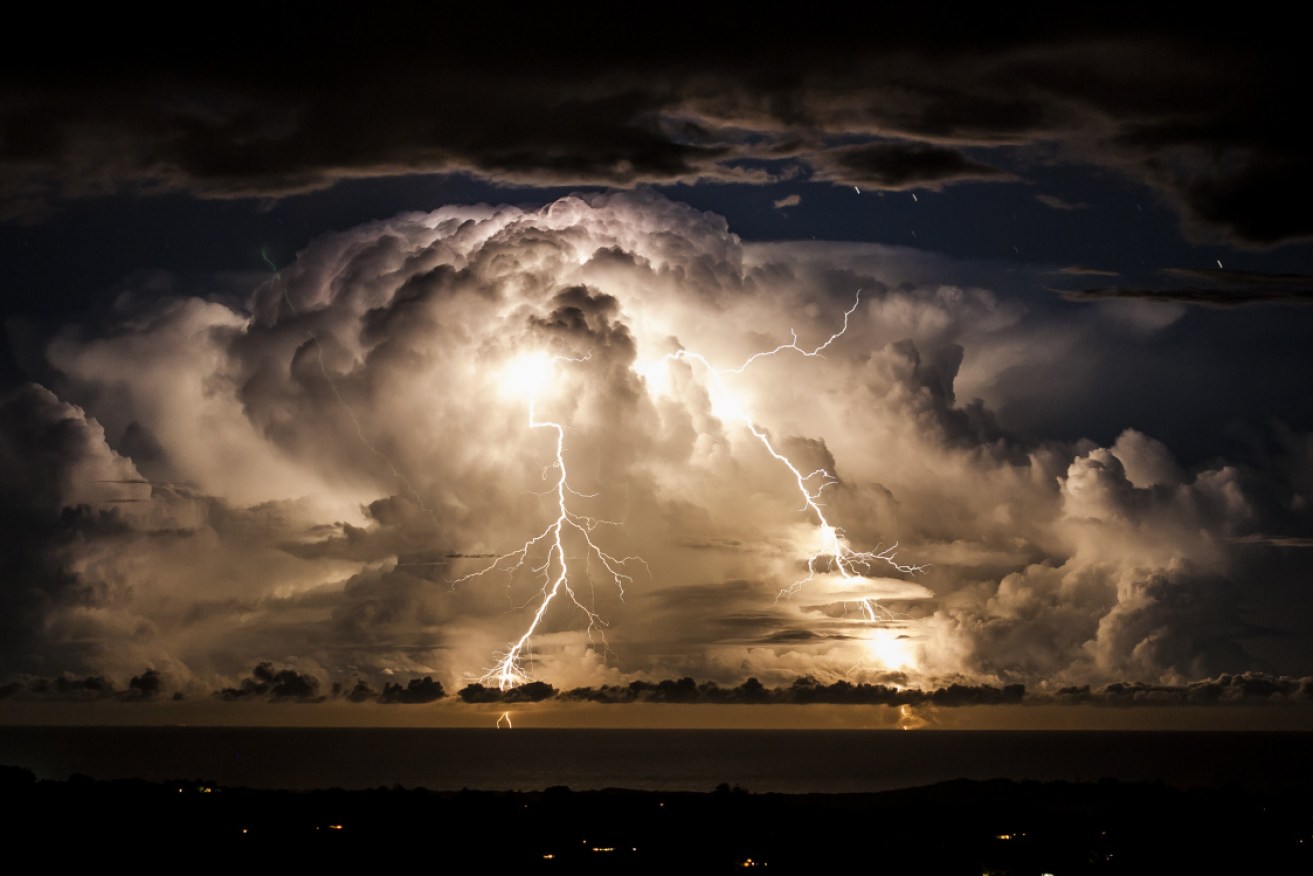Saving the world with hydrogen just came a little closer to reality


Stanford researchers have devised a way to generate hydrogen fuel using solar power, electrodes and saltwater. Photo: Getty
Saving the world (warming dangerously, running out of fresh water and clean air) is a trick you can do in a high school laboratory.
Put two electrodes in a bucket of water. Turn on the power, and hydrogen gas bubbles out of the negative electrode (the cathode) and oxygen bubbles from the positive (anode).
Harvest the hydrogen and use it for fuel – and the only by-product is water. Take a breath of the freshly hatched oxygen and sigh in relief.
The wonder of electrolysis
Until recently, there were two problems with harvesting hydrogen on a world-saving scale: electrolysis was prohibitively expensive because it used too much electricity to make it viable, and it required purified water, which is in short supply.
All of this is changing very quickly.
This week, Stanford researchers demonstrated a new technique for generating hydrogen fuel using solar power, electrodes and saltwater from San Francisco Bay – saltwater being the exciting bit because there is so much of it, albeit increasingly polluted and less alkaline than it used to be.

The Stanford project is just the latest competitor in the contest to divine hydrogen fuel from seawater and offer it up to utility companies. Photo: H Dai.
But, hey presto! The fresh water by-product from burning the hydrogen might help that situation, a little at least.
Stanford team published its technical findings on March 18 in Proceedings of the National Academy of Sciences.
The problem with purified water
Existing water-splitting methods rely on highly purified water, which is a precious resource and costly to produce.
To power cities “you need so much hydrogen it is not conceivable to use purified water,” said Dr Hongjie Dai, professor of chemistry at Stanford and co-senior author on the paper.
“We barely have enough water for our current needs in California,” he said.
Divining hydrogen from sea water isn’t new.
The New Daily has found papers going back at least 40 years showing it can be done. But one of the persistent problems has been negatively charged chloride in seawater salt corroded the positive end – and the system breaks down in a matter of hours.
Dr Dai and his team found that if they coated the anode with layers that were rich in negative charges, the layers repelled chloride and slowed down the decay of the underlying metal.
The race is on
Previous attempts to create hydrogen from seawater tried to beat the corrosion problem by running the electrolysis at a low current – because corrosion occurs at higher currents.
This led to a low yield of hydrogen, making the project inefficient.
But, according to a statement from Stanford University, Dr Dai and his colleagues “were able to conduct up to 10 times more electricity through their multi-layer device, which helps it generate hydrogen from seawater at a faster rate”.
The team members conducted most of their tests in controlled laboratory conditions where they could regulate the amount of electricity entering the system.
They also designed a solar-powered demonstration machine that produced hydrogen and oxygen gas from seawater collected from San Francisco Bay. The point was to get interest from manufacturers.
If that seems premature, consider this:
There’s a race on. A Canadian utility company will soon be testing seawater-hydrogen technology on its grid. The technology developed by a Florida start-up Joi Scientific Inc.
The company is keeping secret how its “Hydrogen 2.0” process works – but has said it’s more efficient than electrolysis and doesn’t require pre-treating the seawater.
It also appears to be a system that allows consumers, presumably on some kind of industrial scale, to produce their own. Their promotional video below outlines some of the challenges:
NB Power, the largest electric utility in the Maritime province of New Brunswick, said the hydrogen will be burned in internal combustion engines to generate electricity, servicing coastal communities – incorporating hydrogen into a complex system that also solar and wind power.
The power company is reportedly trialling hydrogen because the cost of storing renewable energy isn’t coming down fast enough.








